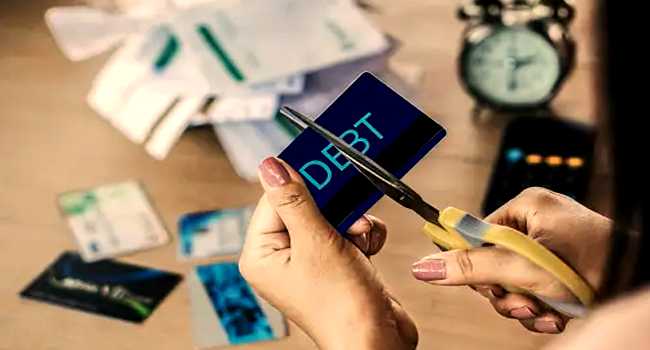Introduction:
Living with Debt can be a heavy burden, impacting financial balance and hindering lengthy-term dreams. However, with determination and proper techniques, it is possible to embark on a debt-loose journey and regain your monetary destiny’s manipulation. This complete guide will explore practical strategies to cast off Debt faster, empowering you to obtain financial freedom and peace of mind.
Chapter 1: Understanding Debt and Its Impact
This chapter will discuss the numerous styles, including client debt (use, credit score playing cards and private loans) and pupil loans. We’ll also explore the lousy effect of Debt on financial well-being, which includes high-hobby bills, strain, and restrained economic flexibility.
Chapter 2: Assessing Your Debt Situation
Before developing a plan to do away with Debt, assessing your current state of affairs with Debt is crucial. In this chapter, we’ll talk about how to collect statistics about your extremely good debts, including loans, hobby fees, and minimum payments. We’ll additionally discover strategies for organizing and prioritizing money owed for reimbursement.
Chapter 3: Creating a Debt Repayment Plan
An established debt compensation plan is critical for making progress toward becoming debt-free. In this bankruptcy, we’ll discuss popular debt reimbursement strategies, the debt snowball method (paying off money owed from most minor to most significant) and the debt avalanche technique (prioritizing money owed with the best hobby charges). We’ll also discover ways to customize compensation plans primarily based on situations involving men or women.
Chapter 4: Increasing Income and Cutting Expenses
Boosting earnings and reducing costs can boost debt compensation efforts. In this chapter, we’ll discuss rea4listic techniques for increasing profits, including taking on a side hustle, freelancing, or looking for a higher-paying process. We’ll explore approaches to cut fees, including creating a budget, lowering discretionary spending, and negotiating payments.
Chapter 5: Consolidating and Refinancing Debt
Consolidating and refinancing Debt can streamline compensation efforts and decrease hobby charges. This chapter will discuss alternatives for consolidating more than one money owed into a single mortgage, including balance switch credit cards or debt consolidation loans. We’ll also discover refinancing options for student loans, mortgages, and lengthy periods of money owed.
Chapter 6: Staying Motivated and Focused
Maintaining motivation and focus is critical throughout a debt-free journey, particularly while facing setbacks or demanding situations. In this chapter, we will discuss techniques for staying stimulated: placing achievable goals, celebrating milestones, and visualizing the advantages of debt freedom. We’ll also discover the significance of constructing a guide machine and looking for professional steerage if wished.
Chapter 7: Avoiding Debt Relapse
Once Debt is eliminated, it’s essential to avoid falling back into vintage spending behaviour and amassing new Debt. This chapter will discuss strategies for stopping debt relapse, including training in mindful spending, developing an emergency fund, and growing an extended-term economic plan. We’ll also explore the importance of ongoing monetary training and resilience in retaining financial freedom.
Conclusion:
Embarking on a debt-loose adventure requires dedication, discipline, and perseverance. By informing your debt scenario, developing a structured compensation plan, and enforcing realistic techniques to increase earnings and decrease expenses, you can cast off Debt faster and acquire monetary freedom. Remember, the adventure to debt-loose living can also have its challenges. However, the rewards of economic independence and peace of mind are worth the effort.
FAQs
1: What is a debt-unfastened journey?
Answer: A debt-unfastened journey refers back to the manner of putting off all tremendous money owed, consisting of credit score card debt, private loans, and student loans, to attain monetary freedom and independence from debt responsibilities.
2: Why is it essential to assess your state of affairs regarding your Debt?
Answer: Assessing your debt situation allows you to gain clean expertise of your awesome money owed, which includes balances, hobby fees, and minimal bills. This information helps you prioritize debts for compensation and create an effective debt compensation plan.
3: What are some popular debt reimbursement techniques?
Answer: Popular debt repayment techniques encompass the debt snowball approach, wherein debts are paid off from most minor to most considerable stability, and the debt avalanche approach, which prioritizes money owed with the very best hobby prices. These strategies assist people in making regular progress towards becoming debt-unfastened.
4: How can I boost profits and reduce costs to boost debt compensation?
Answer: Increasing earnings through facet hustles, freelancing, or seeking higher-paying employment can provide an additional budget to position toward debt reimbursement. Cutting fees through growing a price range, decreasing discretionary spending, and negotiating payments can free up cash for debt repayment.
5: What are the advantages of consolidating and refinancing Debt?
Answer: Consolidating and refinancing Debt can simplify repayment efforts by combining more than one Debt into a single loan with a decreased hobby price. This can reduce monthly bills and keep cash on interest through the years, assisting people in repaying Debt faster.
6: How can I live stimulated throughout a debt-free adventure?
Answer: Staying encouraged through a debt-loose adventure involves setting achievable desires, celebrating milestones, and visualizing the advantages of debt freedom. Building a guide gadget and searching for professional steering can also provide encouragement and accountability.
7: What steps can I take to avoid falling lower back into Debt after becoming debt-unfastened?
Answer: To save you from debt relapse, it’s essential to practice mindful spending, create an emergency fund, and expand a long-term monetary plan. Continuing to prioritize saving and investing and staying knowledgeable about non-public finance can assist in preserving monetary balance and independence.

